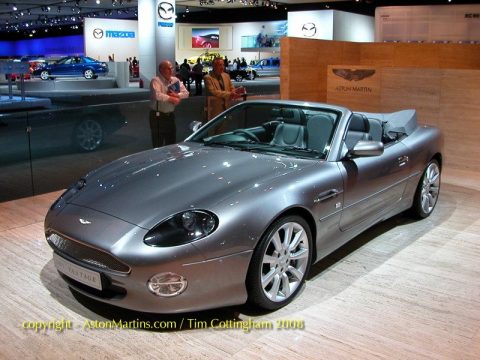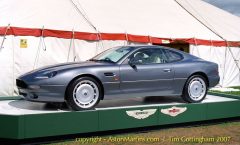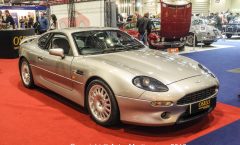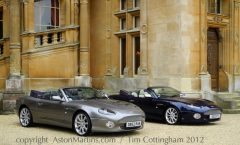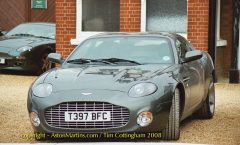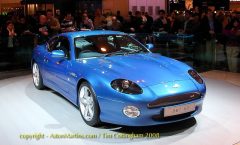By the year 2000, AML entered info an agreement with Tom Walkinshaw Racing (TWR) to design and develop a new more affordable AM that could be built at the rate of about 600 a year and at a price around two thirds that of the Virage. TWR had already great experience with developing the Jaguar XJ-S and as Jaguar Cars had recently been purchased by Ford, TWR used the XJ-S as the initial basis for the new Aston Martin, which was given the name, DB7.
There are at this stage a couple of important points that ought to be made. Firstly that the DB7 is still one of the most beautiful car in the world – timeless, elegant, without the need to look retro. Also that the DB7 is not a Jaguar. OK so it might have borrowed some substantial bits from the XJ-S (and maybe the stillborn XJ-41 aka the F-type) but that’s exactly what Aston Martins have often done. The first Aston Martin was derived from a Singer and the DB2 had a Lagonda engine – didn’t matter then, doesn’t matter now.
The straight 6 cylinder coupe version of the DB7, unveiled to fantastic acclaim in 1993, was joined by the stylish convertible Volante in 1996; a car that was in great demand within the US marketplace. For those owners who need a little more, Works Service and dealers worldwide provided a Driving Dynamics package of enhancements to previously registered cars.
But the icing on the DB7 cake was the V12 engined Vantage, unveiled at the 1999 Geneva Motor Show. Its 5.9 litre powerplant was first seen in the Ford Indigo concept car, then the Lagonda Vignale and finally the Project Vantage. The i6 DB7 was quietly retired in June 1999.
During 2002, two more DB7’s were announced, the limited edition and dramatic DB7 V12 Zagato and the exciting DB7 V12 GT. Plus in early 2003, AML announced another limited edition, the Zagato bodied roadster aimed exclusively for the US market, the DB AR1.
All of the DB7 range of cars were built at AML’s second factory at Bloxham near Banbury in Oxfordshire. The Bloxham factory had previously been used to build the Jaguar XJ220 supercar and following the departure of AML in 2003, was sold to a printing firm.
By the end of production, the DB7 had become the most successful Aston Martin ever with a little over 7000 examples completed. Without the success of the 7, Aston Martin would never have survived into the 21st century. At that time (December 2003), more than one in every three Aston Martins ever produced was a DB7. Nowadays it is considered one of the most beautiful cars ever built and is THE favourite first Aston Martin for owners on a limited budget.

